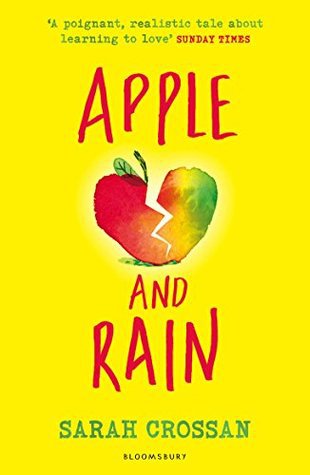Oh thank god this hell year is ending. 2017 has not been a good time for the world in general, and I am glad it’s going – sorta. Personally, it’s been a year of slow progress, and the games that came out this year have been absurdly good. I’ve also started catching up on more games that past me by, as I do every year, and I found some real gems II wasn’t expecting. This was also the year I finally clicked with WRPGs, so expect a lot of articles on them in the future (KOTOR 1&2 will get a Full Course once the Deponia piece is done, apologies it’s taken so long).
I did a year end retrospective for IndieCent, so I decided that will now be my usual yearly thing instead of my gimmicky award blog. However, I will still do my favorite games I played this year, so sit back and check out some of the great stuff I finally got around to playing this year. Some of these games even released this year, and were produced by major companies! I know!
—————-
HONORABLE MENTIONS Costume Quest 1&2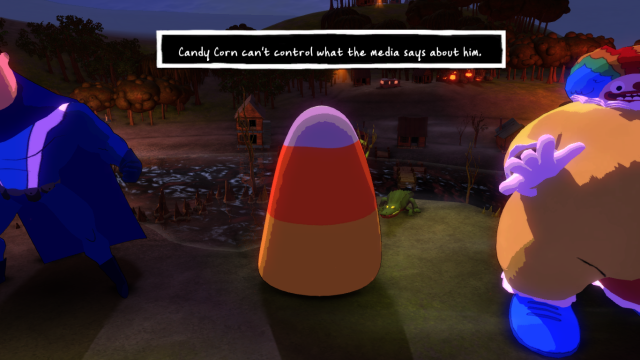
Catching up with my Double Fine backlog was a good call! The Costume Quest series is absolutely adorable, a series of simple RPGs that the whole family can enjoy. Kids can laugh at the silly characters, and adults can enjoy the cyberpunk dystopian nightmares and monster Communism. Also, the second game lets you wear a clown outfit that comes with a bike horn that you can honk whenever you want. You get to freestyle it with a jazz band. 10/10.
Dragon Age: Origins
I have my reservations with this game, like the absurdly long Deep Roads section and the god awful city elf narratives, but damn if this wasn’t the game that finally proved to me why Bioware is so beloved. Hell, it’s so good that I have trouble believing they make it (until anything revolving around city elves happens). DAO is a complicated, ambitious story with a robust cast of characters from wildly different walks of life and cultures, and it’s tempting to go back – or would be if not for the fucking obnoxious enemy placement (OH MY FUCKIN GOD DO NOT GET ME STARTED ON SURPRISE MAGES).
Grand Pigeon’s Duty
This is a Russian made Potty Pigeon take-off. It should be forgettable. It is anything but. What could have been an easy bird pooping arcade game ended up becoming a branching political drama complete with betrayal, revolt, terrorism, religious violence, and even a final boss in one branch where you fight a kaiju Tyler Durden pigeon. Yes, really. It’s hard as hell, but there really is no game like it.
Love Nikki: Dress-Up Queen
Finding a genuinely good mobile game is a challenge, but I sure as shit did not expect the best of the year to be found in a dress up game. Yet that’s what happened, as Love Nikki stole hours of my life with the surprising amount of variety and rich amount of customization options. It’s also really generous to free players if you give it enough time, offering lots of chances at new clothing items. If you haven’t tried this one, look it up.
The Magic Circle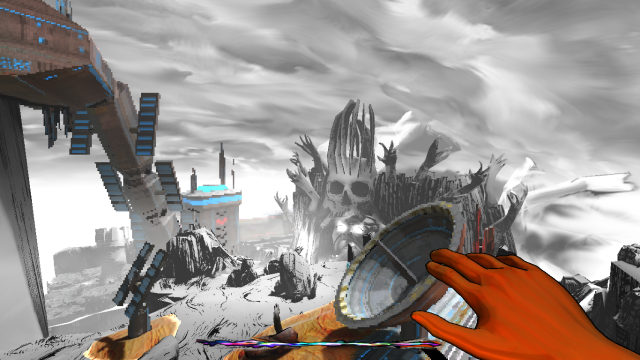
This was one that had been on my to do list for awhile, and I’m glad someone suggested it for IndieCent so I could finally have an excuse to play it. The Magic Circle is a game by Shock series devs that explores the philosophy of game development, rewarding experimentation and player creativity by letting you directly manipulate the game world. It’s inventive, but the entertaining main story ties everything together, especially with the stellar voice cast. If you ever wanted to ride a flying turtle into the sunset to kill a digital god with an alien parasite, do I have the game for you!
Pizza Express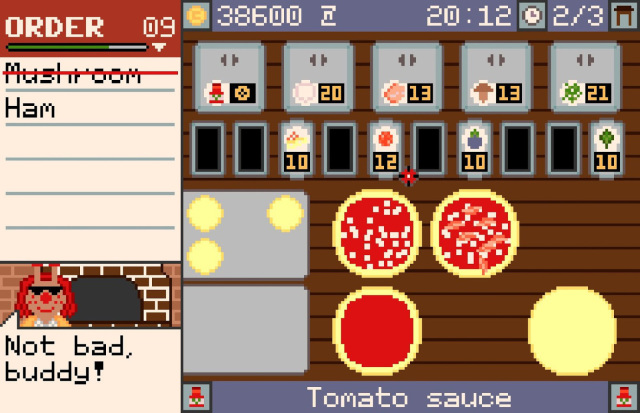
This was a game I picked up because a furry on twitter mentioned it. Yup. Glad I did, though, because it’s a surprisingly large and challenging sim. There’s a fun story about helping two friends run a pizza shop that goes on a lot of unexpected tangents, backed with a stressful (in a good way) pizza making game and sim elements. You’re not only the cook, but the guy deciding on advertising, furniture, specials, the menu, and more. It’s a dirt cheap little game you can find on Steam that will keep you busy for hours, trust me.
Sonic Forces
I haven’t played much of Forces yet, but what I have played tells me it’s a mostly middle of the line 3D Sonic game that needed more time in the oven. However, the avatar creation system is one of the best ideas the franchise has had in decades, becoming the main driving force to back up the solid concept but oddly empty revolution plot. As for Sonic Mania, it is on my radar and I plan to get to it …eventually.
Star Wars: Knights of the Old Republic II: The Sith Lords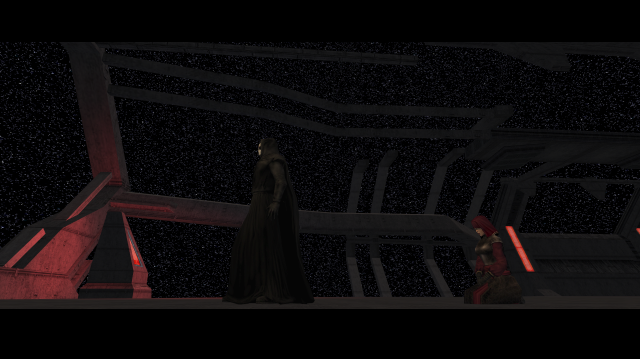
I think I might love Obsidian. Everything they make seems to strange and thought out, and it’s so invigorating to have direct comparison between them and Bioware with the KOTOR games. KOTOR 1 ended up being really disappointing, with a simplistic narrative that failed to comment on any of the vastly more interesting issues it brings up, not to mention the mostly wasted party. But KOTOR 2, Obsidian’s follow up on Bioware’s big splash, despite technically being unfinished, is a completely different beast. A more complex web of cause and effect, a cast of broken and empty people finding purpose, villains that go from fascists to undying monstrosities, and most importantly, a whole lot of critical self-awareness. This is like the anti-Bioware game and it’s amazing. It just barely missed the list this year because I started it so ate, but it will probably be on next year.
Syberia 3
I couldn’t place this one on the list in good conscious. It’s a broken, buggy mess of a game, so much so that it basically had to have the control scheme ripped out and replaced with a functional one shortly after it released. However, I also couldn’t go without giving my respect to Sokal’s writing here. Syberia 3 is a shockingly timely story, showing us the slow death of old cultures and the world itself through the crushing influence of capitalism and nationalism, and never has this series rang so true and strongly as it did here.
—————-
10. Alpha Protocol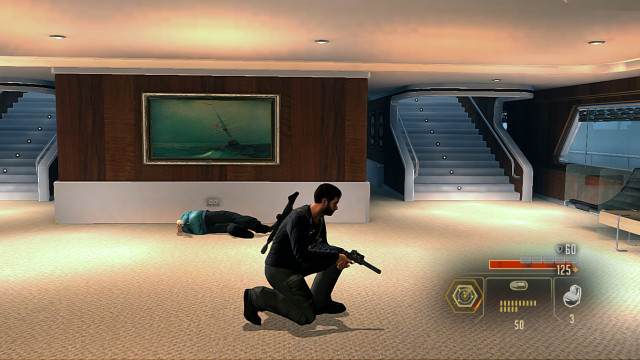
The best thing about finally getting into WRPGs is that I’m finally getting into Obsidian’s library, and their stuff (plus their Black Isle days) is absolutely my shit. Alpha Protocol was the first of their games I finally played (outside trying Fallout 2 and being horribly confused by it), and it sunk its hooks into me so deep that I replayed it four times for two weeks straight. Despite the many, many technical issues, I adored this from beginning to end. Few games have ever hit quite the right sweet spots in me as this one, from the surprisingly sharp political commentary to the bosses that could easily be mistaken as Metal Gear characters.
The mechanical core is fine enough, but the web of cause and effect is what kept me replaying it over and over and inspired the Full Course series. Alpha Protocol is stupidly complex in what can and can’t happen, a few bugs aside. No one playthrough is ever the same as the last, and I love how no win situations are used to really push this. The ending of the Rome section is masterful. I still have the urge to reinstall this and try a new build, it’s that addicting.
9. Owlboy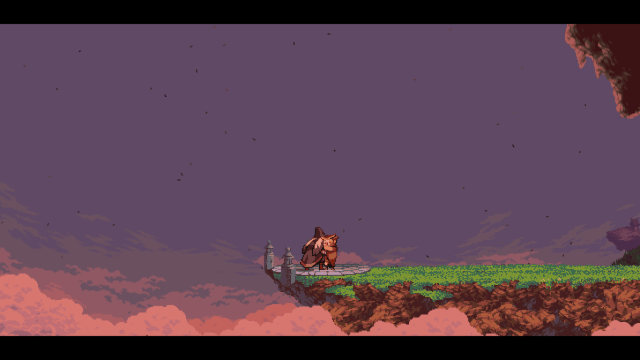
Another early year play, Owlboy choked me up once it hit the ending cutscene. As far as the game stuff goes, it’s fine enough. It’s very much a Zelda/Castlevania deal with a focus on flight and shooting via the partner system, and there’s some inventive stuff in there. That partner system is sadly underutilized, but the story and graphics make up for it.
Owlboy was in development for nearly a decade, with the goal of being a send up to the lost art of sprite graphics. Nearly every single things you see in this game is sprite art, even what appear to be effects. It is a handcrafted piece of moving art, with all the blood, sweat and tears evident in the sheer polish and charm. Even the story manages some beautiful moments, taking a rather basic good versus evil plot with an underdog hero and putting real humanity into it all. There are surprisingly heavy subjects there, ranging from abuse to living with handicaps (plus a character who could be read as a trans metaphor), and everyone gets a moment of real human sorrow or joy (minus the big bad villain). It’s a very strange game in that the main game itself isn’t particularly great, but everything made in service of it is so impressive that it hardly matters.
8. Little Red Lie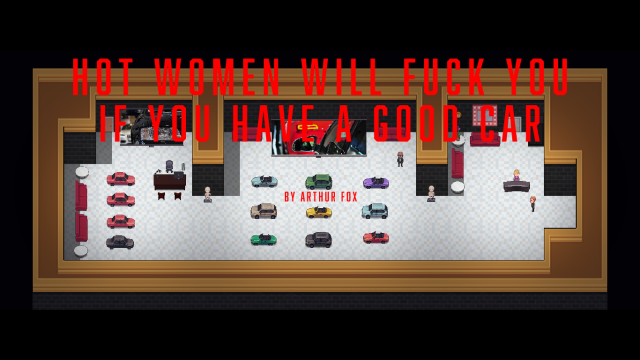
While I still wait for Sometimes Always Monsters, Will O’Neill finally managed to finish his sophomore solo effort in the meantime, and holy hell. Little Red Lie isn’t autobiographical like Actual Sunlight was, but it’s still just as depressing and real as that game was, possibly more. Little Red Lie is a game all about the collapse of the modern world and how we’re all sinking in it as the rich don’t even register what’s happening, and it hits hard. Honestly, it was uncomfortable how much of the game’s events line up with my own life and the lives of many of my friends. O’Neill’s written monologues still have all the punch as ever, but now with the benefit of nifty new effects that highlight the words and give them more punch. Just the simple use of red for untrue statements is enough to give the cast a new layer of ugly humanity.
I have to give all the kudos to Arthur Fox in particular, quite possibly the most perfect representation of the modern rich conservative – hedonistic, lazy, self-obsessed, insecure, and poisoned with a sort of anti-knowledge that it traps him in a world of destructive ignorance that everyone around him is sucked into. O’Neill even breaks the forth wall at one point to make it perfectly clear there is absolutely nothing redeeming about this sack of crap, despite what the entirety of western media has told you about rich people for decades now. Little Red Lie is the sort of game I got into indie gaming to play, and I can’t wait to see what O’Neill does next.
7. The Silver Case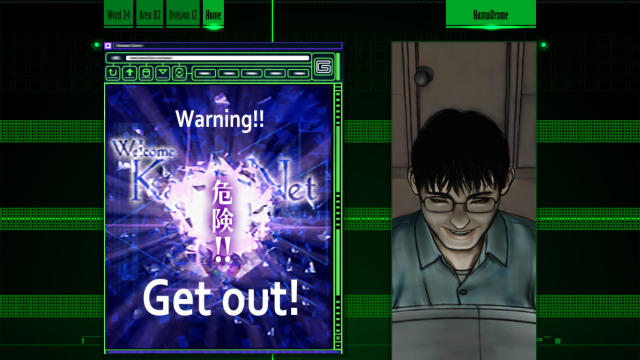
SUDA 51’s first original effort finally got a translation, and hot damn it was worth the wait. The Silver Case is one of the most bizarre visual novels ever made, combining supernatural horror, crime drama, conspiracy thriller beats, and forth wall fuckery in a way only early Grasshopper Manufacture could. On top of that, it’s a full blown remake with new epilogue cases and a gorgeous new hud that oozes atmosphere, changing in color and patterns with each chapter for the sake of tone. It’s easily one of the most unforgettable experiences I have ever had.
On top of all of this is the unique “film window” presentation the studio used due to limitations in the original PS1 hardware on first release. The game uses small windows that appear over the hud to show text, still images, and short clips, resulting in a sort of comic like effect that uses some film techniques in the process. The end result is an endlessly captivating read that gets the balance right between what is shown and what the reader imagines. And yes, the plot is just as incomprehensible as expected, but thematically rich. I mean, SUDA 51 predicted the rise of doxxing hordes and the horrors of the information age two years before MGS2, and that’s just a small part of a much larger, more ridiculously complex whole. The Silver Case is something no fan of visual novels or SUDA 51’s work should miss.
6. Stories Untold
Speaking of incredibly experimental success stories, No Code’s Stories Untold is a masterwork of presentation and mechanical tone building. This was an utter surprise, something neat looking I saw at the Steam storefront that I thought would be good podcast material. I was not expecting a modern text adventure horror game that turned 80s tech into instruments of dread. The first episode alone is more than worth the price of admission, with some of the best scares in gaming history, including one slow moment at the end that had the hairs on the back of my neck standing up.
But what cemented my love for this game was the final episode. I can’t explain it without giving the game away, but the long and short is that Stories Untold perfectly plays with story structure and hidden details to railroad into one hell of a last story. It’s a mixture of cinematic splendor and visual trickery I had no idea was at all possible in games. I am serious when I say this is one of those games that’s going to be put in text books, just for the sheer amount of things it did nobody had ever done in this medium before.
5. LISA
Fucking LISA. Good lord. The running theme in my top five is that every single one of these games got me to cry or choke up a bit and LISA managed that while also leaving me feeling dead inside – and I spoiled everything for myself! I knew what was coming and still wasn’t prepared! LISA is a series so utterly, disgustingly human that it hooks its claws into you and doesn’t let you forget it. For every dumb joke where guys trade smut mags as currency or an internet personality makes you drink garbage, there’s a moment of absolute misery and heartbreak not far behind. I wrote a massive Full Course on this series, so go read that for more details.
4. Shadowrun: Dragonfall/Hong Kong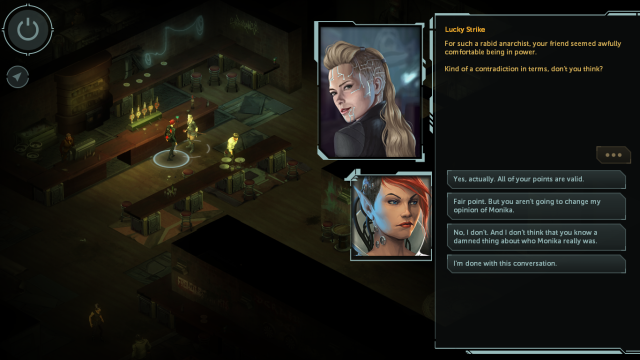
Okay, the Full Course I did on these was kind of a huge mess and disaster, I know. But I really do feel strongly about these Shadowrun games, and goddamn if these didn’t blow me away, despite the complete lack of technical competency (Hong Kong runs like crap on my PC at times, despite being a text heavy RPG). Dragonfall alone is a beautiful accomplishment that would make any RPG studio envious, but to follow it up with the grungy and sharp Hong Kong is almost an absurd testament to Harebrained Schemes talent.
Dragonfall is an emotional powerhouse of a story by the end, with fully realized characters and a beautiful world covered and defined by snow and the ashes of the dead and gone, complete with incredibly open and endlessly enjoyable runs. Hong Kong doesn’t quite have the same punch, but all the details are polished to a shine, with one of the best parties in any RPG out there, not to mention countless stealth and non-lethal options for more clever players. It’s an absolutely huge game I still want to play through again (I even started a new run as a human mage for a bit). If you like RPGs, you NEED to play these.
3. The Beginner’s Guide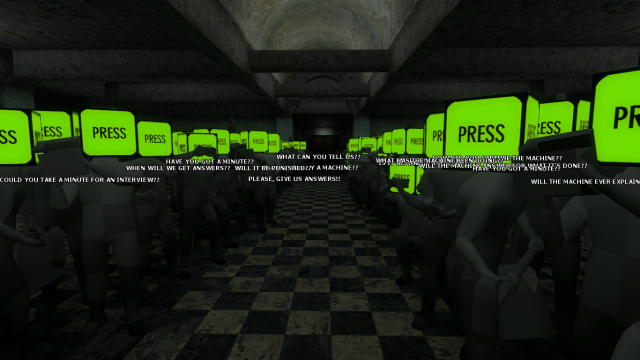
How do you follow up The Stanley Parable? How do you follow up one of the most brilliant deconstructions of the entire concept of video games ever? Well, Davey Wreden randomly released this hour to two hour game and pulled the rug out from under just about everyone, presenting some sort of game design museum and switching gears into a nihilistic, meta breakdown. It’s simply incredible.
There are so many layers to what The Beginner’s Guide pulls and what it’s trying to say that I still muse on it now. By the time I finished it, my jaw was on the floor. It’s deeply personal – though possibly completely fictitious, toying with the audience and forcing them to think on their own viewpoint. It’s an inspired experiment with audience viewpoint, making us question what we put into art when we view it, but leaving on a beautiful note of somber reflection. Making a stand in for the audience in a game about audience preconceptions the villain was such a brilliant move, and how the game unfolds and reveals its tricks resulted in one of the most memorable experiences I’ve ever had with any game. I can remember the breakdown sequence with such clarity months later, which I can’t say about most games. This is the ultimate critic game, because it’s kind of about us, and it’s incredibly insightful.
2. Deponia Doomsday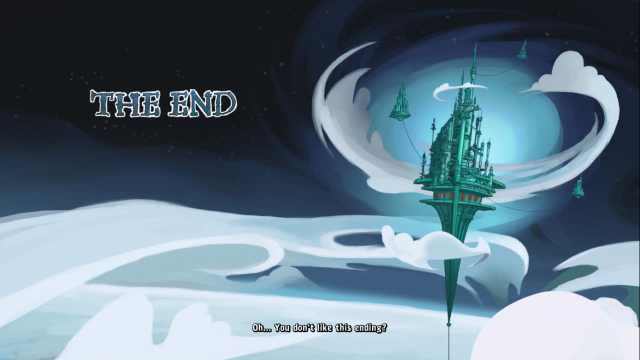
I am still shocked Deponia Doomsday was as good as it ended up being. I liked the Deponia games, but they were all so riddled with problems and really bad decisions (COUGHGOODBYEDEPONIACOUGH). Deponia Doomsday isn’t free of this (Oh god the entire Lotta origin), but what it gets right it nails down absolutely perfectly. I think it’s fitting I played this the same year Danganronpa V3 came out, because it does something similar – moves past fan expectations and asks for an ending. The difference is that we already had an ending for the Deponia series, and Doomsday is far more than that. It’s a parable about the dangers of not letting go and moving on, and it manages to make Rufus, one of the biggest dicks in gaming history, into a likable and tragic figure. It’s like this game was written by reality warping wizards.
The thing is that the game never hides its intentions. It starts with the entire world being destroyed in the aftermath of a mass extinction event, Goal narrating her desire for more time with Rufus, and the designer himself warning the audience that trying to come back will only end with pain – and he wasn’t joking. It’s a surprisingly self-aware story, turning Rufus and Goal into a star-crossed couple who’s fighting back against fate only invites worse and worse outcomes. You want them to succeed, but after awhile, it starts becoming clear that the only possible successes have to be bitter sweet – and that may be for the best. They got me to cry over Rufus and Goal not getting their big, dumb happy ending and goddamnit how did they accomplish that. I’m not even mentioning half of the stuff here, including a whole mess of time travel shenanigans, a lot of on the nose jabs at the fanbase, and so forth, but at the core is a fantastic tale of two people just trying to recapture something lost. But as we’re told at the beginning, beware the endings…
1. Alan Wake
Of COURSE Alan Wake was going to be my favorite game I played this year. It’s a combination of Stephen King and David Lynch wrapped up in a meta story about creation that constantly breaks the forth wall, this is my hole and it was made for me. As a horror game alone, Alan Wake is masterful stuff, especially the DLC episodes in Alan’s head, but the fact it aims so much higher with a type of story that no other major game studio would even amuse themselves with considering makes it an anomaly. Say what you will about Microsoft, but when they take chances on publishing stuff, they take some fucking chances.
Every single character is likable and filled with personality, and every line of dialog is a perfect mixture of sincere and cheesy to swerve it back into surprisingly thoughtful as the game winds down. The dark presence is a perfect concept for a horror villain, even as the game goes more in a camp direction, and Alan’s self-loathing and doubt is all too familiar to me and I’m sure many other artists. More over, I feel my Full Course on this one was one of my best articles in a long time, thanks to how much this inspired me to look into it and shape further my own methods of criticism. Also, fuck da haters, American Nightmare was good. Fight me.
—————-
What will the following year have for me? I have no idea, but I’m excited. Maybe I’ll dive more into Obsidian’s backlog…hint hint…
Advertisements Share this:

